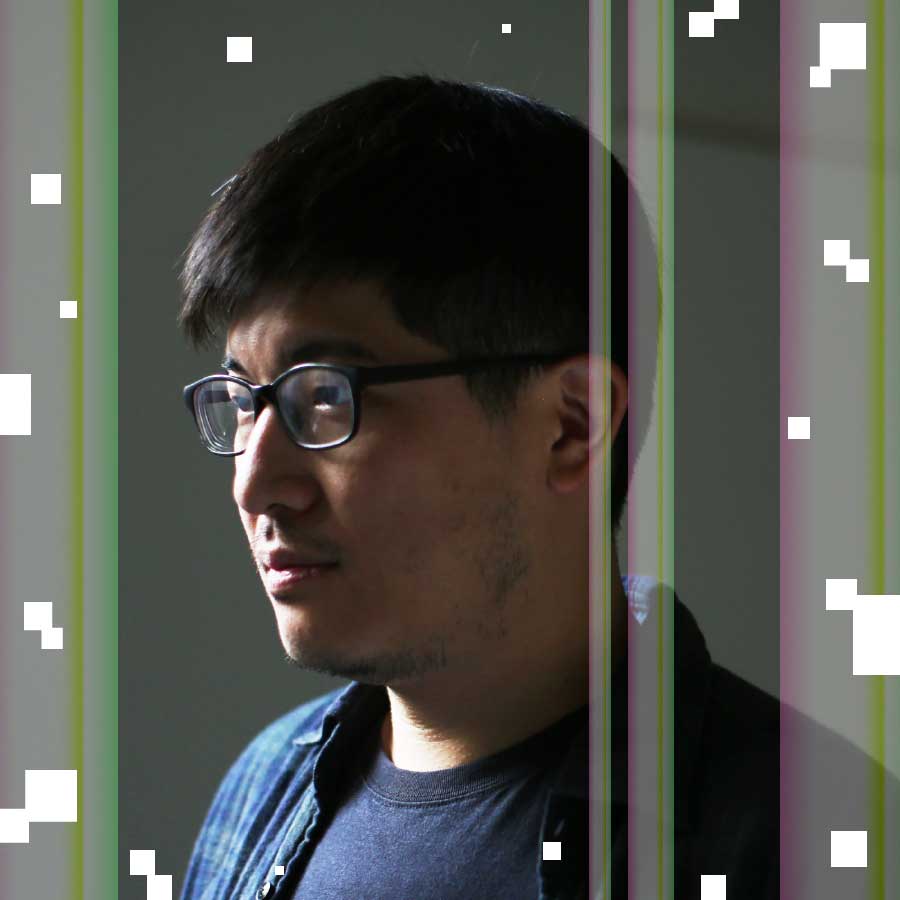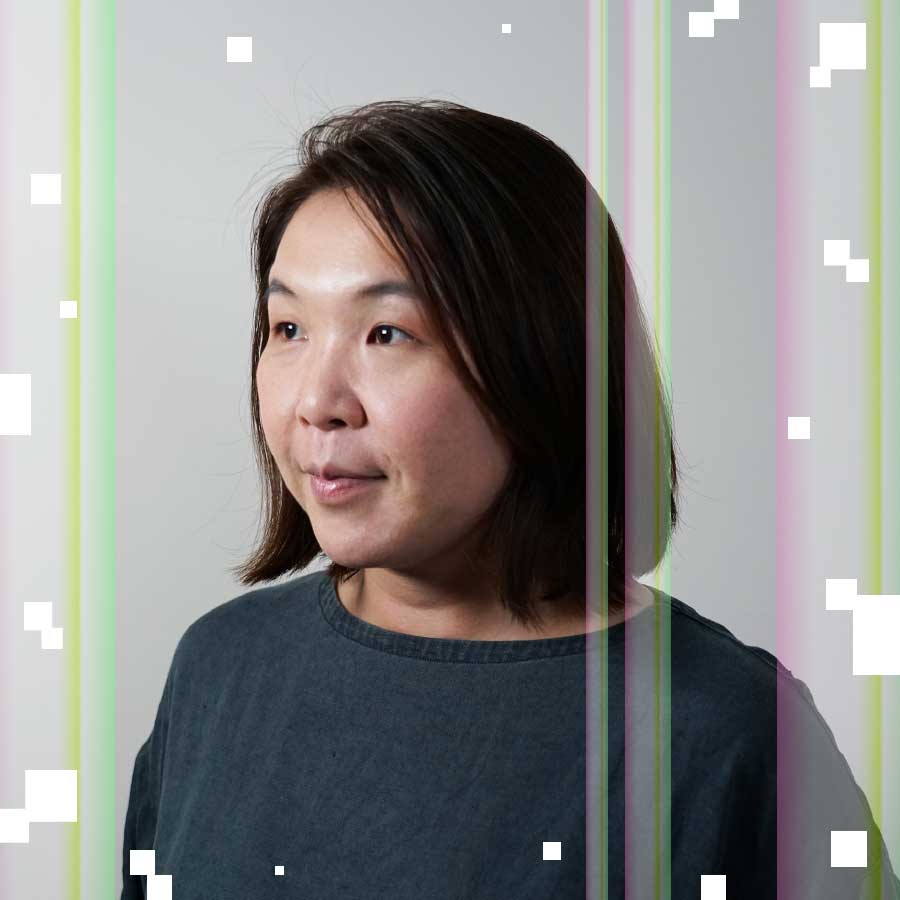Curatorial Statement
In Chinese mythology, Pangu is said to have created the heavens and the earth. When he died, his eyes became the sun and moon, his hair turned into the grass, and his breath formed the wind. In many creation myths from around the world, the relationship among deities, the earth, and nature is intertwined. This relationship can also be seen in early humans, as they primarily depended on nature and wild animals for survival before completely adapting to agricultural societies. However, as we entered the digital era, humans have been proactively developing digital technologies to make production and lives more convenient and efficient. They take and use whatever resources available to achieve this end, producing a chimeric world.
In Greek mythology, the term “chimera” refers to a fearsome, fire-breathing monster with the head of a lion, the body of a goat, and the tail of a snake. Later, biologists used the term to describe a single organism that contains genetically distinct cells. This year’s Digital Art Festival Taipei centers on the theme of “Chimera Island,” where groups of artists from several countries are invited to showcase their interdisciplinary and hybrid artworks – narratives of humankind mimicking ecology and technology to strengthen their power at all levels. In particular, AI development is raiding all industries in a strong pose, which has certainly affected artists’ attitudes towards technology. If we see technologies and human lives solely through the lens of computation and replacement, this world will soon become an obsolete system that is doomed to be taken over. Hence, Chimera Island aims to offer a platform for viewers to have a further exploration on the organic relationship between humans and technology.
In terms of the curation concept and methodology, they are indeed interrelated and built on two frameworks. The first one, inspired by the philosophy of technology, centers around organology, which stands for an extension of the curation concept. It further unfolds other scholars’ perspectives regarding technologies and tools as supporting organs, exploring in a broader sense the relationships among organic organs (living organisms), technical organs (medical technologies), and social organizations (systematic and institutional levels). Basically, it is improbable for humankind to survive without technical organs developed by science and technology. Our imagination of a world can be narrowed down as tiny as a cell or extended as vast as the universe. In fact, this echoes to the English poet William Blake’s poetry: “To see a World in a Grain of Sand, And a Heaven in a Wild Flower.” In other words, the scrutinization of a grain of sand still allows us to see the immense formation of the world and the universe. Thus, the ways to organically operate the body system composed of the psychotic and technical organs are then the key questions we must address today. It is something that we constantly remind ourselves of, to avoid an oversimplification of the meaning of tools and technologies (e.g., AI) in our society and not to artlessly use it as the logic of computation or manpower replacement.
The second framework is built on “Speculation” and “Fiction,” serving as a methodology to depict the crossbreeding that comes from technology and humans, guiding viewers to probe into the underlying ethical and cultural issues. In recent years, many biologists have intended to introduce human genes into animal embryos through genetic engineering, hoping to grow human organs from the embryos to meet the medical needs of alternate human organs. The purpose of this practice is to improve human health. However, crossbreed genetic chimerism triggered several ethical concerns. On the one hand, the chimeric human-animal embryos tickle our nerves in terms of the meaning of mankind in human culture. On the other hand, they somehow allude to a double-edged feeling towards emerging technology – a desire to create new opportunities through technology and a fear of threats to human existence posed by technology. In this year’s Digital Art Festival Taipei, numerous artists used their works to speculate the impact of technology on the coming world through the materialization and visualization of these fragmented fictional narratives, allowing the viewers to rethink the chimeric-like diversified organ system through interactions and sensory experiences. Concurrently, their artworks present speculative scenarios and fictional narratives which aim to shatter the viewers’ stiff binary mindset of technology.
Like the myths of Gaia and Pangu, our imagination of a “body” should not be confined to the one we see with the naked eye. Humans and extensions of them – assistive technology tools, network systems, and operations of the universe – should also be seen as parts of the “body” yet in distinct dimensions; the different systems that enable the respective operations are like “organs”, each with their corresponding responsibilities, that keep the body in good functionality. As time goes on, systems possibly attained with technology will eventually aggrandize and amplify. It is not only delimited to the mobile phones and direct messages used every single day by every individual; human society and technology, taken as a single entity, will even connect to space and the unknown system beyond. Therefore, this exhibition aims for the artworks to engage in dialogue with each other as well as the interweaving of the different fictional worlds so that we could all ponder the possibility of making the relationship of contemporary technology and humankind living more organic. Chimera Island is metamorphized as a gigantic body in which social mechanisms and technologies are organs of different functions within, working together to achieve the ideal chimerism.
This year’s festival is co-curated by Hsiang-Wen Chen and Kuang-Yi Ku, with the participation of the active NFT collective ‘Volume DAO,’ who will organize an outdoor screening feature. The ‘Coevolution Research Assembly’ will host four educational programs which including collaborative art workshops and interdisciplinary lectures. We look forward to everyone embarking on an adventure to the Chimere Island to discover more interesting landscapes.
Curators

Kuang-Yi Ku



